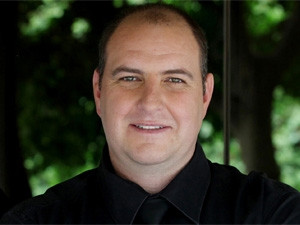
While there has been much debate about the longevity of SMS - with many in the industry deeming it a dying telecommunications breed, as operators' SMS revenues continue to plummet - there is still a long road ahead for the technology in the world of marketing.
On average, in SA, the use of SMS - a two-decade-old cellular messaging technology - drops about 40% per user when they adopt smartphones, according to researchers. There are currently over 10 million smartphones in SA, around a fifth of the total population.
Belying this finding, telecoms and tech author Tomi Ahonen says it is also a fact that SMS is still the most used mobile service in the world, followed by voice. As of December, one in six people in the world had a mobile phone and were connected to a mobile network.
Application-to-person (A2P) services, say industry professionals, remain the lifeblood of the telecoms protocol.
Marketing means
Brent Wantenaar, aggregation product manager at Cellfind - a subsidiary of JSE-listed Blue Label Telecoms - says SMS is more relevant than ever as a marketing and communications channel in a world where consumers are flooded with communications across a wide range of channels, from e-mail and social media, to more traditional media such as post and print.
In SA, says Wantenaar, Internet penetration is not yet high enough to make e-mail a viable replacement for SMS as a mechanism to communicate marketing offers or bills and invoices.
"At the same time, SMS is also more reliable and cost-effective than post, especially for low-income consumers who may not have a permanent address.
"SMS reaches a device the consumer always carries and almost never switches off. Even when a consumer's landline number and fixed-address change, they are likely to keep the same cellphone number."
SMS messages are also more likely to be received, read and acted on than e-mail messages, he adds. "Legitimate marketing messages often struggle to find their way through spam filters at Internet service providers and on users' computers, and even when they reach the inbox, they are often deleted without a second thought."
Wantenaar says most consumers still read SMSes, because the cellphone is a "trusted and personal channel".
The amount of SMS messages most people receive, he says, are more manageable than the amount of e-mails received. "[And] because they get time-sensitive messages like banking notifications by SMS, [they will] usually read each SMS as soon as the alert comes in."
He says marketers are forced to hone their messages because of the 160-character limit of SMS, meaning the call to action has to be short and precise - hence the acronym's origin, short message service.
"SMS is one of the few marketing channels that cuts across demographics in SA. It allows for simple automation of communications for users from the lowest to the highest living standard measures."
Steady SMS
December marked the 20-year anniversary of the first SMS ever sent. At the time, World Wide Worx MD Arthur Goldstuck said there will long be a key role to be played by SMS. "It remains the most effective means of mass communication between a business and its customers."
Goldstuck points out that a large customer base can be targeted instantaneously with very short messages and an immediate call to action. "Such mass messaging can also be segmented to reach different categories of customers with different messages in a highly-targeted manner, with very little additional effort."
According to a 2012 study by World Wide Worx, SMS had remained steady at 12%, a figure Goldstuck says was kept up by the fact that business-to-customer marketing and response is SMS- rather than data-based.
Goldstuck confirms the "real future" of SMS lies in marketing.
Share